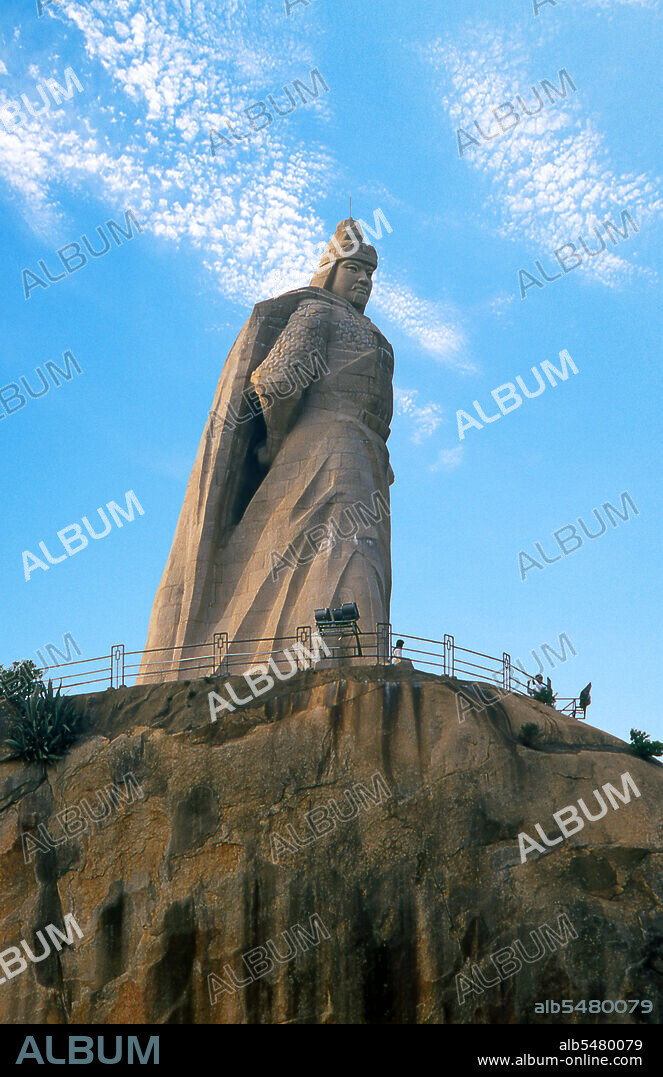alb5480079
The giant statue of Koxinga (Chinese military leader, famous for his fight against the Manchu conquest of China), Gulangyu Island, Xiamen, Fujian Province.

|
Zu einem anderen Lightbox hinzufügen |
|
Zu einem anderen Lightbox hinzufügen |



Haben Sie bereits ein Konto? Anmelden
Sie haben kein Konto? Registrieren
Dieses Bild kaufen.
Nutzung auswählen:

Titel:
The giant statue of Koxinga (Chinese military leader, famous for his fight against the Manchu conquest of China), Gulangyu Island, Xiamen, Fujian Province.
Untertitel:
Siehe automatische Übersetzung
Koxinga (Lord of the Imperial Surname) is the customary Western spelling of the popular appellation of Zheng Chenggong, a Chinese military leader who was born in 1624 in Hirado, Japan to Chinese merchant/pirate Zheng Zhilong and his Japanese wife, and died in 1662 on the Island of Formosa (Taiwan). A Ming loyalist and the chief commander of the Ming troops on the maritime front for the later emperors of the withering dynasty, Koxinga devoted the last 16 years of his life to resisting the conquest of China by the Manchus. The area where Xiamen now exists was known as Tong'an in some Han Dynasty records, though the area was not significantly settled by Han Chinese until several centuries later. In 1387, the Ming Dynasty built a fort in Xiamen, then part of Quanzhou, to guard against pirates. After the Manchu Qing Dynasty overthrew the Ming in 1644, Ming loyalist Koxinga, used Xiamen as a base to launch counterattacks against the invading Manchus from 1650 to 1660. In 1656, he named Xiamen Island, Siming, or 'Remembering the Ming'. In 1661, Koxinga drove the Dutch from Taiwan and moved his operations there. The Manchus renamed the island Xiamen.
Bildnachweis:
Album / Pictures From History/Universal Images Group
Freigaben (Releases):
Bildgröße:
3363 x 5195 px | 50.0 MB
Druckgröße:
28.5 x 44.0 cm | 11.2 x 17.3 in (300 dpi)
Schlüsselwörter:


 Pinterest
Pinterest Twitter
Twitter Facebook
Facebook Link kopieren
Link kopieren Email
Email
